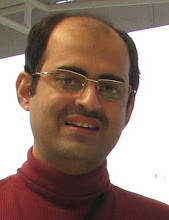Silently, five Mevlevi dervishes or semazen enter single file, wearing costumes that symbolise the death of ego. The hirka or black cloak represents its tomb and the sikke, the slender, tapering earth-coloured headdress, is its tombstone. Beneath the cloak is the tenure, a fullskirted long white gown depicting the shroud held in place with a black cummerbund.

Walking in circles and bowing to each other in acknowledgement of the centre of Divine Truth within the heart of each, the dervishes take their place on sheepskin mats on the floor to the chanting of the Naat-I-Sherif, composed by Itri in praise of the prophet Muhammad. The drumbeat represents the Divine command, “Be”. The flute represents the soul given to universe.
Slowly, the dervishes rise from the floor, and casting off the black robes, they fold their arms across their chest with hands hugging their shoulders, and walk slowly. Then, they begin to turn. The position of the arms signifies the Unity of God. As the semazen rotate, they also revolve around the centre of the room, like the earth rotates on its axis as it revolves around the sun.
As the whirling gains momentum, slowly, the arms are unfurled from across their chests and gravitate upward as though in total surrender, head inclined at an angle to the right, eyes half-closed, intoxicated with love. The graceful movement of the arms — one palm turned upward, receiving from God, and the other face downward, giving to all — is captivating. One is torn between focusing on the ecstatic, trance-like facial expression and the evocative symbolism of the arms that seem to say, “We keep nothing to ourselves”.
The whirling is now so swift you can no longer distinguish figure from movement, space from time, reality from unreality, or present from past. Then they slow down. This was the first cycle of the Sema, when the dervishes are viewing all the worlds, the way to reach the grandeur and majesty of God. The lovers are freed from doubt and testify their faith in the Unity of God. They now slow down, much like a top that loses momentum. But instead of coming to a standstill or collapsing on the floor, the gopi-like semazen, lovers of the Divine, resume whirling in a second cycle. The whole existence is dissolved within this Divine Unity.
During the third cycle the lovers cleanse themselves and reach the level of maturity. In the fourth cycle they arrive at the junction of non-existence within Divine Existence. With only the sound of the flute — so reminiscent of Krishna in Brindavan surrounded by adoring gopis — the spiritual exposition ends with a reading from the Qur’an.
Coming out of the railway waiting roomcum-mystical paradise, enchanted by the dervishes, one could ‘hear’ Mevlevi Jalaluddin Rumi’s words resound across Platform No. 1 as a train (the Orient Express?) comes charging in: “If you entered the Sema you will leave both worlds:/ the world of the Sema is outside both worlds”.
________________
The above article is by Narayani Ganesh, on her trip to Istanbul. Sub-titled 'Exploring the other side of Islam', it appeared in the Times of India on Saturday 7.7.2007
